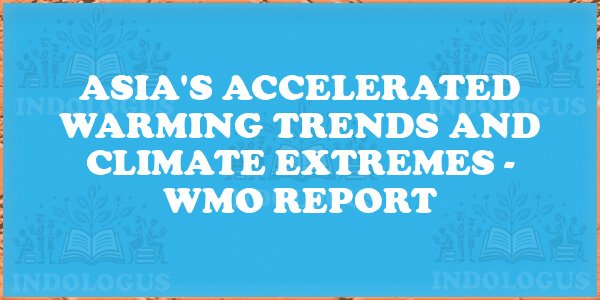Asia is experiencing accelerated warming trends, with the World Meteorological Organization (WMO) warning that the region is warming at almost twice the global average. The WMO’s State of the Climate in Asia 2024 report, released in June 2025, highlights the alarming impact of climate change on the continent. The report reveals record-breaking temperatures, sea-level rise, glacial loss, and extreme weather events, making 2024 the hottest year on record in Asia.
Key Findings
Warming Trends
- Asia’s warming rate is nearly double the global average.
- 2024 was the hottest year ever recorded in Asia.
- Sea surface temperatures and marine heatwaves reached record highs.
Temperature and Heatwaves
- Every year from 2015–2024 was among the 10 warmest years.
- Japan matched its highest summer mean temperature on record in 2024.
- India witnessed over 450 deaths from severe heatwaves.
Sea-Level Rise and Glacial Loss
- Asia’s sea-level rise exceeded the global average, posing a threat to low-lying regions.
- 23 out of 24 monitored glaciers in the Himalayas and Tian Shan lost mass.
- Glacial lake outburst floods (GLOFs) increased, leading to displacement in Nepal.
Deadly Weather Events (2024 Highlights)
- UAE recorded its heaviest 24-hour rainfall since 1949.
- Nepal floods in Sept 2024 caused 246 deaths and significant damage.
- Kerala, India saw over 350 deaths due to extreme rainfall in Wayanad.
Cyclones
- Four cyclones formed in 2024.
- Notable cyclones like Remal and Asna caused significant impacts in the Bay of Bengal and Arabian Sea regions.
Key Takeaways for Competitive Exams
- Asia is warming at a rate almost double the global average, leading to severe climate impacts.
- Record-breaking temperatures and extreme weather events have made 2024 the hottest year in Asia.
- Sea-level rise, glacial loss, and deadly weather events are major concerns across the continent.



